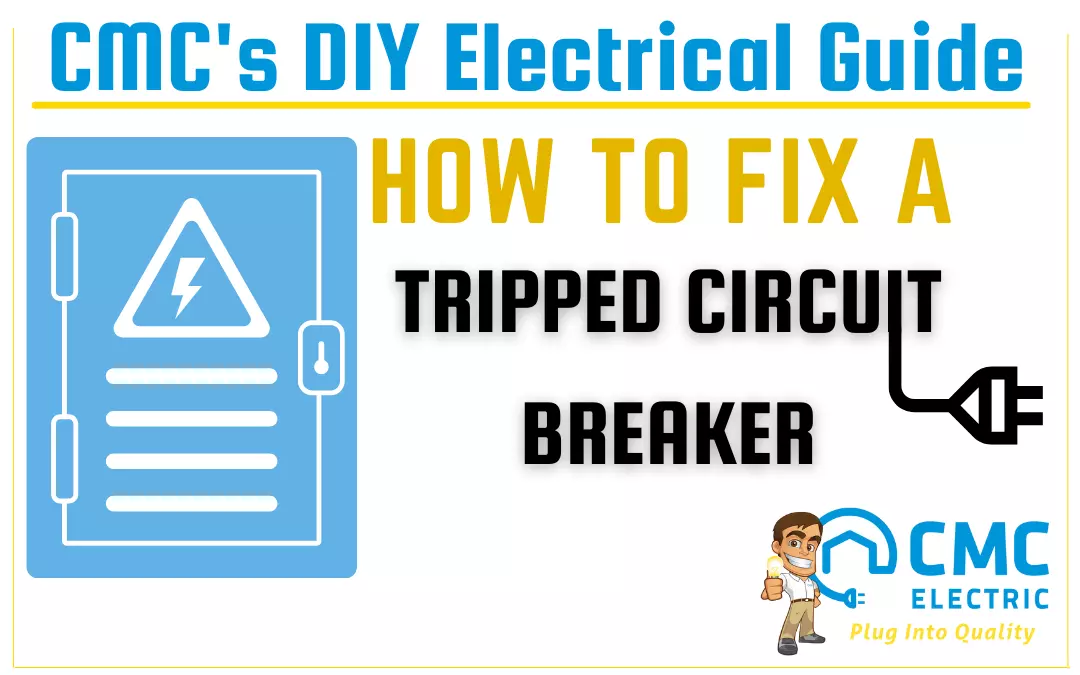
Most of the time, the occasional tripped circuit breaker isn’t much of a concern. But if the breaker trips repeatedly, there’s usually a reason. It’s designed to cut power when the electrical current flows at a level that’s deemed unsafe. When a breaker trips, you cannot use any outlets, switches, or fixtures it serves. Here’s a look at how to proceed if you need to fix a tripped breaker, no matter what type of circuit breaker you have.
How to Fix a Tripped Circuit Breaker
Try Resetting a Tripped Circuit Breaker
If you know the breaker that has tripped, turn off any appliances, lights, or switches on that circuit. Make sure your hands and the floor below are dry before you touch the electrical panel. To reset the breaker, locate the panel (usually in the basement, utility room, hallway, or garage), and open the panel door. It should have a list or map of what devices/rooms each breaker serves.
Find the breaker that corresponds to the affected area. Move the tripped breaker to the “Off” position and then move it back to the “On” position. It should click into place. Next, check the circuit and room where power was interrupted to see if everything is working again.
Check for Issues with the Circuit
If you can’t reset the breaker or it trips again after you reset it, it’s time to troubleshoot the circuit. Some of the issues to look for include:
- Too many appliances/devices plugged into the circuit; if the breaker works normally after you unplug some appliances, the problem is resolved.
- Whether one appliance is causing the problem. If so, unplug it and plug in a different device; this can tell you whether a dedicated circuit or a new appliance is needed.
- Damage to terminals. Sockets may look scorched and plugs may be hot to the touch; this indicates an electrical equipment problem is triggering the circuit breaker.
- Light switch problems; if the breaker trips after turning on a specific fixture or switch, you’ve isolated the source of the problem.
- If you’ve started to narrow down the source, reset the breaker and isolate and retry a particular fixture before others. This helps find the cause of the issue.
Test the Circuit Breaker
If you have a voltage tester, turn off any lights and appliances on the tripped circuit breaker. Then loosen the screws and remove the metal frame around the breakers on the panel. With the panel exposed, you can now test the breaker using AC voltage, using a 120 V multimeter. Place the red prong onto the “hot” terminal screw and the black prong on the neutral bar; the reading should display 120 V, but it will read zero if the circuit breaker is bad.
How to Replace a Circuit Breaker
Circuit breakers aren’t designed to be repaired. You need to replace any faulty ones. This can often be done without an electrician. To proceed, turn off branch circuits and then the main breaker. Verify there’s no electricity flowing to the panel with a voltage tester. Disconnect the wire, using a screwdriver, from the terminal where the faulty breaker is.
Carefully pry out the old circuit breaker. Each fits and locks into place a certain way, so you’ll want to insert the new breaker accordingly. Then attach the load wire onto the terminal and tighten any terminal screws. After replacing the panel cover, you can turn on the main breaker and then each branch circuit, one at a time. Test each breaker with the voltage meter and, if all seems well, try each fixture and appliance on the circuit to make sure it’s working.
Contact CMC Service Experts
The electrical panel and circuit breakers are essentially the heart of your home electrical system. If you’re not comfortable replacing breakers, our trained electricians will be happy to do any maintenance or repair work for you in the Raleigh area. We can directly address the cause of tripping or overloading and even replace or upgrade your electrical panel. Call 919-726-3813 to schedule same-day service.






